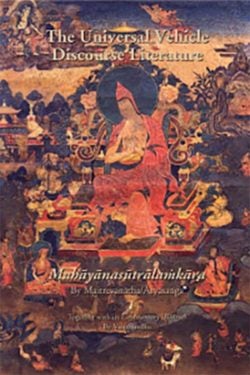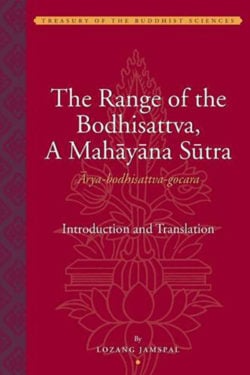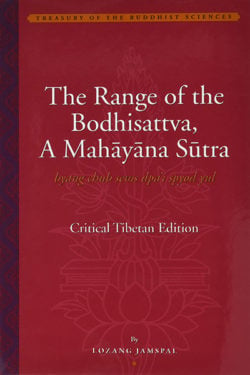Lozang Jamspal

Lozang Jamspal holds a Rigs-chen degree from Tashi Lhunpo Monastic University in Tibet, an Acharya degree in Sanskrit from Sanskrit University, Varanasi, and a PhD from Columbia University. Formerly Lecturer in Buddhist Sanskrit and Classical Tibetan in the Department of Religion at Columbia University, he is currently a professor at the International Buddhist College in Thailand.
Books, Courses & Podcasts
The Universal Vehicle Discourse Literature (Mahāyānasūtrālaṁkāra)
The Universal Vehicle Discourse Literature (Mahāyānasūtrālaṃkāra) was transmitted from the bodhisattva Maitreyanātha to Āryā Āsaṅga, the fourth-century Indian Buddhist scholar-adept. The most foundational of the set of the famous Five Teachings of Maitreya, the Discourse Literature is considered the wellspring of what the Tibetans call the “magnificent deeds trend of the path,” the compassion side, which balances the “profound view trend of the path,” the wisdom side. The Discourse Literature is also considered to be metaphysically aligned with and foundational for the Idealist (Vijñānavādin) school of Mahāyāna thought. Translated from Sanskrit, Tibetan, and Chinese by Lobsang Jamspal, Robert Thurman, and the AIBS team, the present work contains a fully annotated, critical English rendition of the Discourse Literature along with its commentary (bhāṣya) by Āsaṅga’s brother, Vasubandhu. It also includes an introduction covering essential historical and philosophical topics, a bibliography, and a detailed index. This long-awaited work is the founding cornerstone of the AIBS Treasury of the Buddhist Sciences series.
The Range of the Bodhisattva, a Mahāyana Sūtra (Ārya-bodhisattva-gocara)
This is a study and the first complete English translation of the Mahāyāna Sūtra, the Bodhi-sattva-gocara, which presents one of the only Buddhist teachings extant on what might be called a “Buddhist theory of war.” The main body of the text takes the form of a dialogue between King Caṇḍapradyota and the Nirgrantha sage, Satyaka, who is later revealed by Śākyamuni Buddha to be a bodhisattva of high attainment.
The author’s introductory essay traces the ways in which the later Indian and Tibetan commentarial traditions have drawn on this sūtra in order to expound upon key themes in Buddhist ethics, law, and state policy, to highlight their positions in opposition to their non-Buddhist contemporaries. From the author’s analysis, it is clear that this sūtra has been seminal in the ethical reflections of generations of Indian and Tibetan Buddhists, though it appears that it was not well known in East Asia.
A companion volume of a Tibetan critical edition is also available.
The Range of the Bodhisattva, A Mahāyāna Sutra (byang chub sems dpa’i spyod yul)
This is the companion volume to The Range of the Bodhisattva: Introduction and Translation, a critical Tibetan edition of the Mahāyāna Sūtra, the Bodhisattva-gocara, which presents one of the only Buddhist teachings extant on what might be called a “Buddhist theory of war.” The main body of the text takes the form of a dialogue between King Caṇḍapradyota and the Nirgrantha sage, Satyaka, who is later revealed by Shākyamuni Buddha to be a bodhisattva of high attainment. The author’s critical edition synthesizes the readings of five different recensions of the text to produce an edition of the sūtra that runs parallel to the published English translation.



